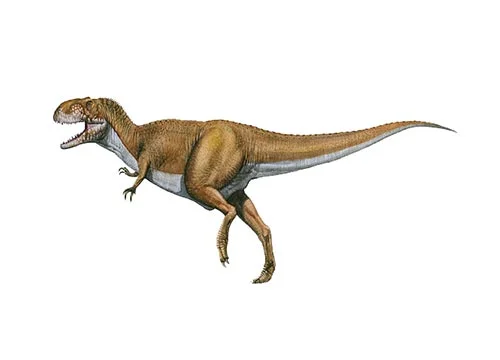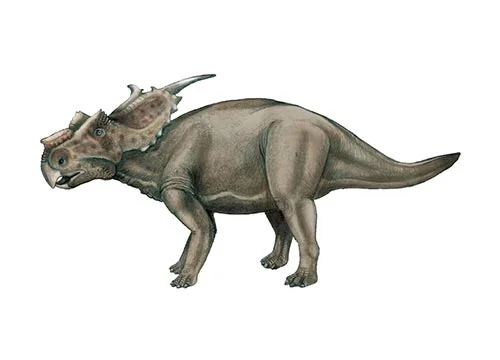Qantassaurus (Qantas lizard)

Kwan-tass-sore-us
T. H. Rich & P. Vickers-Rich - 1999
Herbivore
Estimated 1.5 meters long
Euornithopods
Q. intrepidus (type)
Australia, Victoria - Wonthaggi Formation
Early Cretaceous, 115 million years ago
Qantassaurus Facts
Qantassaurus, meaning “Qantas lizard,” is a genus of small ornithopod dinosaur that lived in Australia during the Early Cretaceous period, approximately 115 million years ago. It was named after the Australian airline Qantas, in recognition of its discovery by a team of researchers who were on a flight sponsored by the company.
Qantassaurus is known from several incomplete fossils, including partial skeletons and isolated bones. Based on these remains, paleontologists estimate that it was a small dinosaur, measuring up to 1.5 meters (5 feet) in length and weighing around 20-30 kilograms (44-66 pounds). It had a long, slender body with four legs and a long tail, and likely moved on two legs, using its tail for balance.
One of the most distinctive features of Qantassaurus was its teeth. Unlike many other ornithopods, which had complex batteries of teeth for grinding plant material, Qantassaurus had simple, peg-like teeth that were specialized for cutting and slicing tough vegetation. This suggests that it may have had a unique diet, different from other ornithopods of its time.
Qantassaurus was a member of the family Hypsilophodontidae, which was a diverse group of small herbivorous dinosaurs that lived during the Cretaceous period. This family includes many well-known dinosaurs, such as Hypsilophodon, Orodromeus, and Thescelosaurus.
As a relatively recently discovered dinosaur, Qantassaurus is still being studied by paleontologists, and new findings are shedding light on its anatomy, behavior, and relationships with other dinosaurs. For example, recent research suggests that Qantassaurus may be closely related to other hypsilophodontids from Asia, indicating that there may have been a connection between the dinosaur faunas of Australia and Asia during the Early Cretaceous.
Overall, Qantassaurus is an important addition to the fossil record of Australia, and its discovery highlights the importance of continued exploration and research into the country’s rich paleontological heritage.



